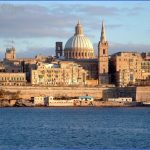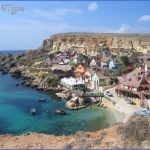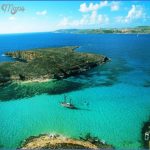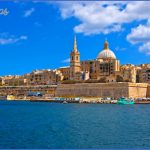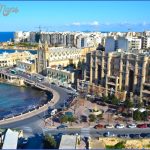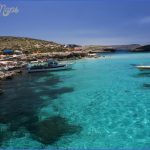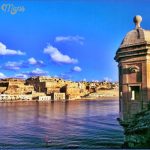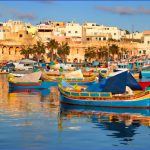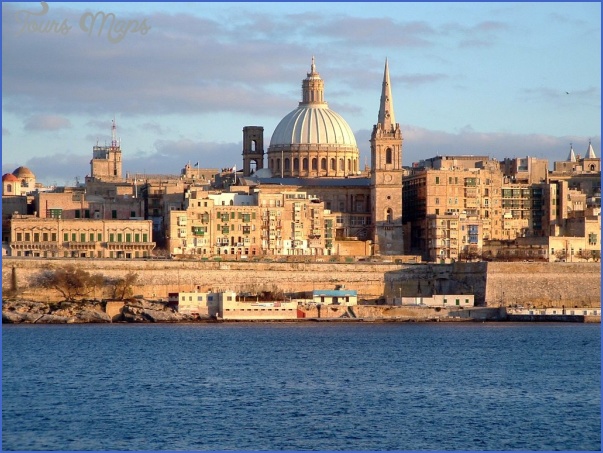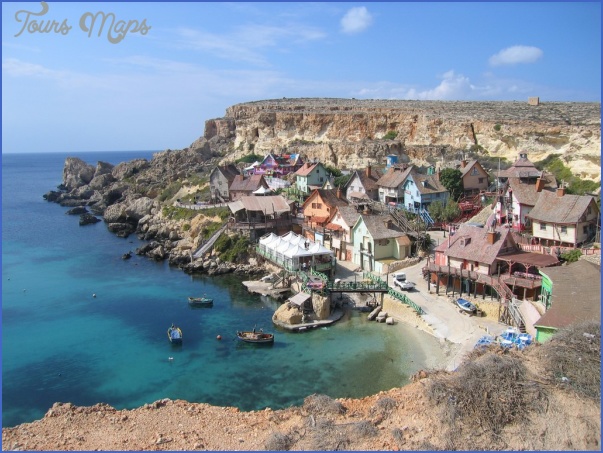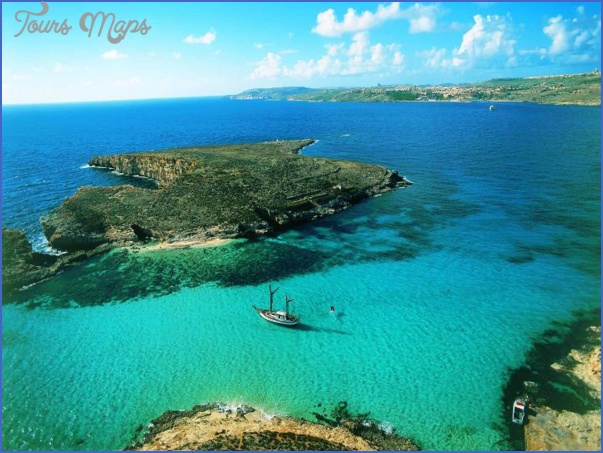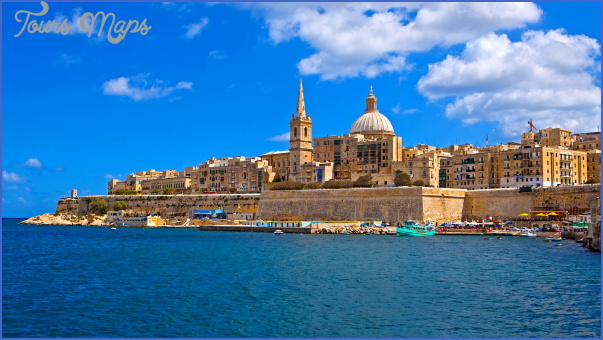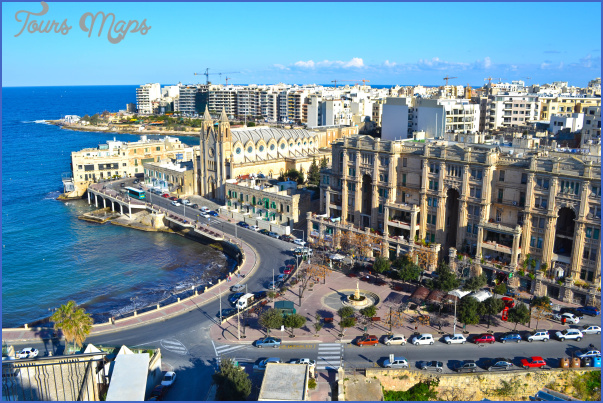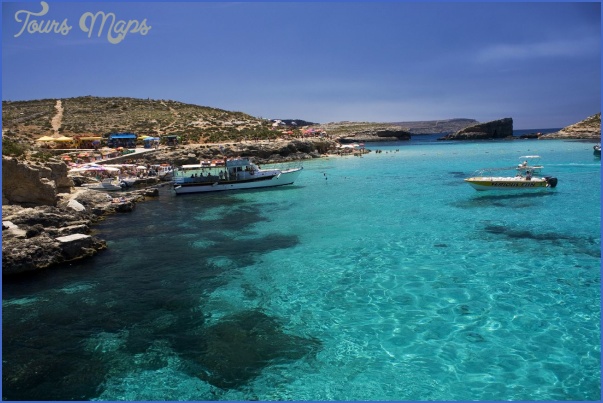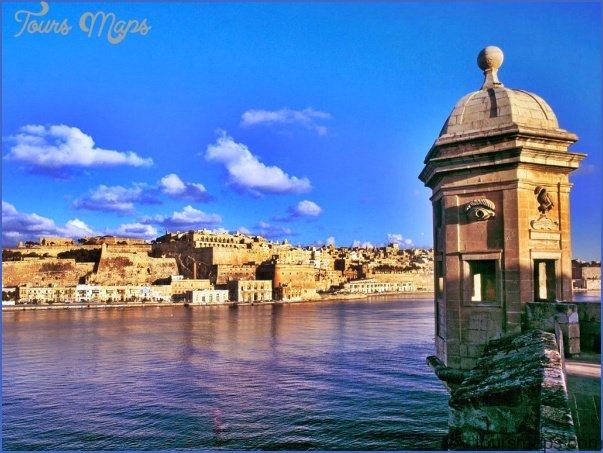MALTA
Consisting of three Mediterranean islands fifty-eight miles south of Sicily, Malta is only 121 square miles in all.
The history-minded traveler loves Malta for its castles and fortresses. Valletta, Malta’s capital, sits on a narrow spot of land bordered by two harbors. The Knights of St. John, the famous crusader order, was headquartered there between 1530 and 1798. Malta’s seat of government occupies what was the Grand Master’s Palace. Old inns, once used by the knights, now house government agencies. The National Archeology Museum exhibits finds from temples built on Malta as long as twenty-five hundred years ago. Tourists, mostly British, come to Malta on holiday. Package tours from Britain are frequent and a
number of British have elected to retire in Malta. Formerly British, Malta became an independent nation in 1964. It is one of the most densely populated countries in the world, about 2,555 people per square mile, as compared with fifty-five per square mile in the United States.
Mdina, a village of one thousand, six miles west of Valletta, is a walled town virtually unchanged for five hundred years. An ancient sanctuary and underground temple carved out of solid rock about 2400 B.C. is located three miles south of Valletta. It consists of an elaborate series of rooms on various levels. During World War II it saved many Maltese lives when used as a shelter to escape bombs dropped for hours on end by German planes.
Malta’s northwest coast is the site of a series of resort towns where the ocean water is said to be about the cleanest in the Mediterranean. Gozo, reached by ferry, has the walled town of Victoria and is Malta’s fruit and vegetable garden.
ENDNOTES
1. Source: World Tourism Organization.
2. Moscow Circles, J.R. Dorrell, Norton, N.Y.C., 1983.
3. Georgia I. Hesse, Travel Section, Los Angeles Times, Sept. 4, 1983.
MALTA Photo Gallery
Maybe You Like Them Too
- Explore Apapa, Nigeria with this Detailed Map
- Explore Angleton, Texas with this detailed map
- Explore Blavozy, France with this detailed map
- Explore East Lindfield, Australia with this detailed map
- Explore Bonferraro, Italy with this detailed map

